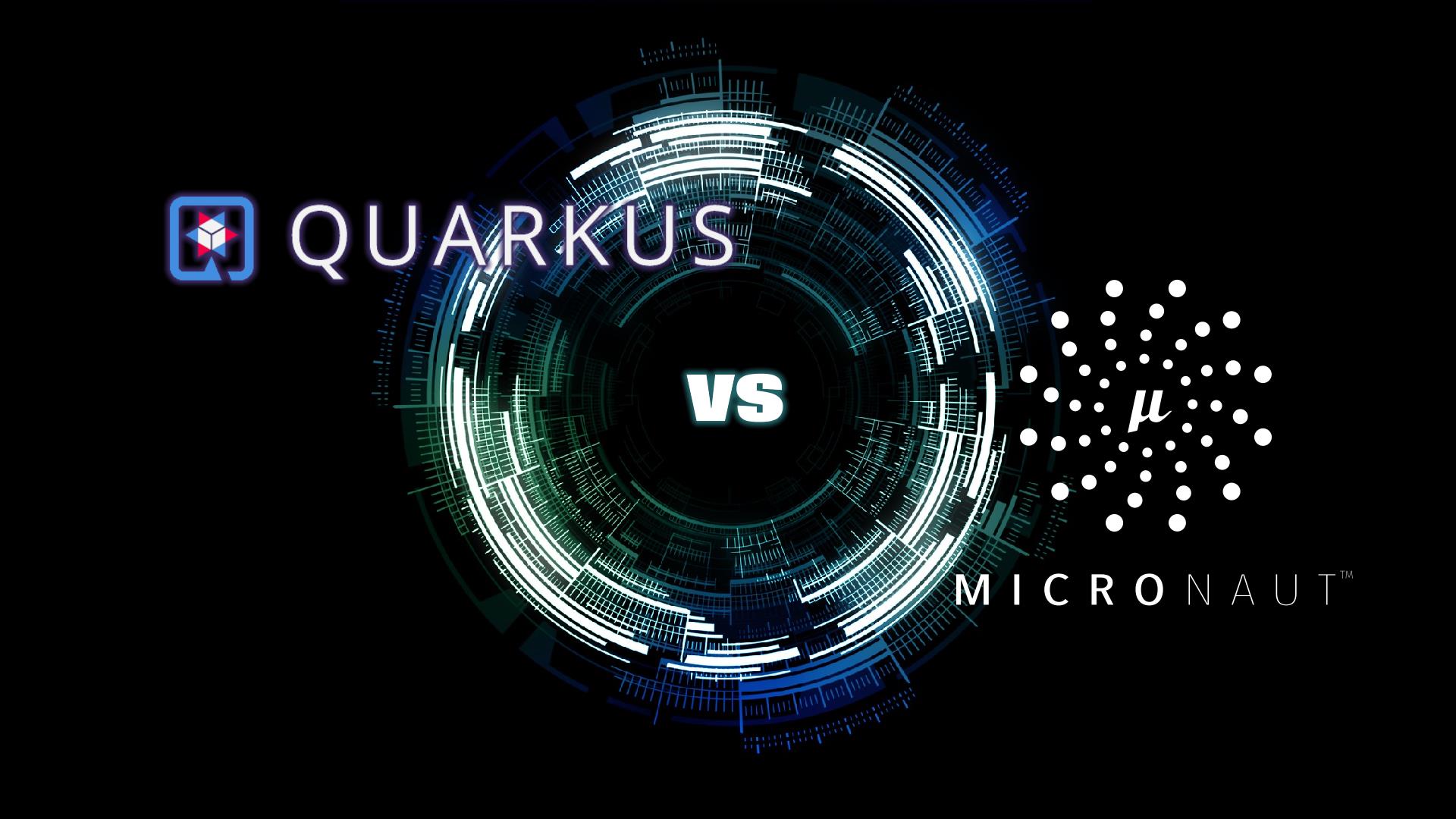Quarkus vs Micronaut: a feature comparison

Quarkus and Micronaut are modern Java frameworks that can be used to build microservice and serverless applications tailored for JDK and GraalVM.
While Quarkus is backed by Red Hat, Micronaut is developed by the creators of the Grails framework and sponsored by Object Computing, Inc..
Development of Quarkus started on early 2019, the 1.0.0 version was released on November 2019. Micronaut development started on early 2018, the 1.0.0 version was released on October 2018.
Both Quarkus and Micronaut are open source under the Apache License 2.0.
While Quarkus is more reliant on Jakarta EE / Java EE and Eclipse MicroProfile APIs, Micronaut defines it's own APIs and is more inspired by the Spring and Grails frameworks.
Quarkus is based on an extension architecture that makes it easy to integrate third party frameworks. You can for example use Spring DI, Web and Data JPA annotations in your Quarkus applications.
Micronaut provides an Aspect Oriented Programming (AOP) implementation that does not use reflection to define cross cutting concerns (logging, ...).
Dependency Injection and Inversion of Control
Quarkus implements a subset of the Contexts and Dependency Injection (CDI) specification. Supported DI features and limitation can be viewed here.
Micronaut uses a simpler compile time dependency injection implementation that only uses reflection as a last resort and avoids proxies. A full Micronaut IoC guide is available in this page.
Reactive and declarative programming
Both Quarkus and Micronaut support reactive programming.
Quarkus supports both Netty and Vert.x as reactive engines that are based on an event-driven architecture with non-blocking IO. Reactive Messaging is supported with Apache Kafka and AMQP. Reactive MySQL, PostgreSQL and MongoDB clients are also available. An alternative declarative way to implement HTTP endpoints is possible with Reactive routes.
Micronaut includes both non-blocking HTTP server and client APIs based on Netty. Reactive MySQL and PostgreSQL clients are supported via third-party libraries. Apache Kafka and RabbitMQ are also supported with Reactive APIs.
Resilience & Fault tolerance
To enable resiliency, Quarkus contains an implementation of the MicroProfile Fault Tolerance specification to provide Retry, Timeout, Fallback, and Circuit Breaker capabilities (as demonstrated in the following guide).
Micronaut also supports the Retry, Fallback, and Circuit Breaker patterns as AOP advices.
Cloud
Quarkus primarily targets Kubernetes cloud environments. Automated generation of Kubernetes resources is provided out of the box. Serverless support is available for AWS Lambda and Azure Functions.
Micronaut provides natively support to many cloud features such as distributed configuration (Consul, AWS Secrets Manager), service discovery (Consul, Eureka) and serverless functions (AWS Lambda, Azure Functions).
Language Support
Quarkus provides support to Java, Kotlin, Scala and Groovy via extensions, while Micronaut comes with for Java, Groovy and Kotlin support with Scala via a plugin.
Tooling
Quarkus provides an online project generator with configurable dependencies: https://code.quarkus.io/. It also provides live reload capabilities for the GraalVM native build mode.
Micronaut projects can also be generated with an online generator starting from the 2.0.3 version: https://micronaut.io/launch/.
References
When it comes to features, both frameworks provide comparable serverless and cloud capabilities with a wide array of third-party library integrations, and support both imperative and reactive stacks.
As both frameworks support GraalVM ahead-of-time compilation for more performance improvements, and more specifically the startup time, I have shared in this article some tips to help you get started with the Native Image tool.